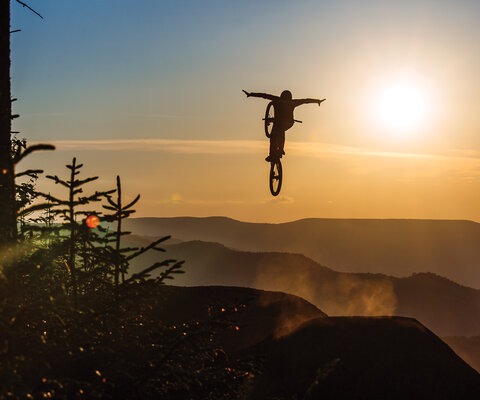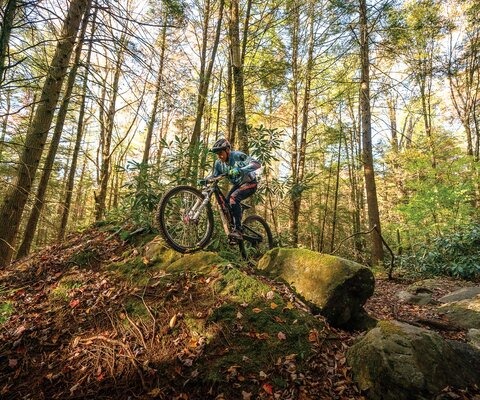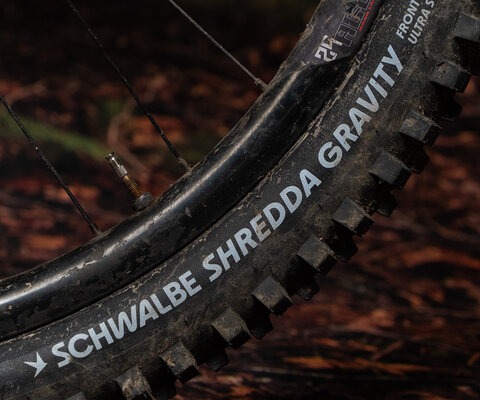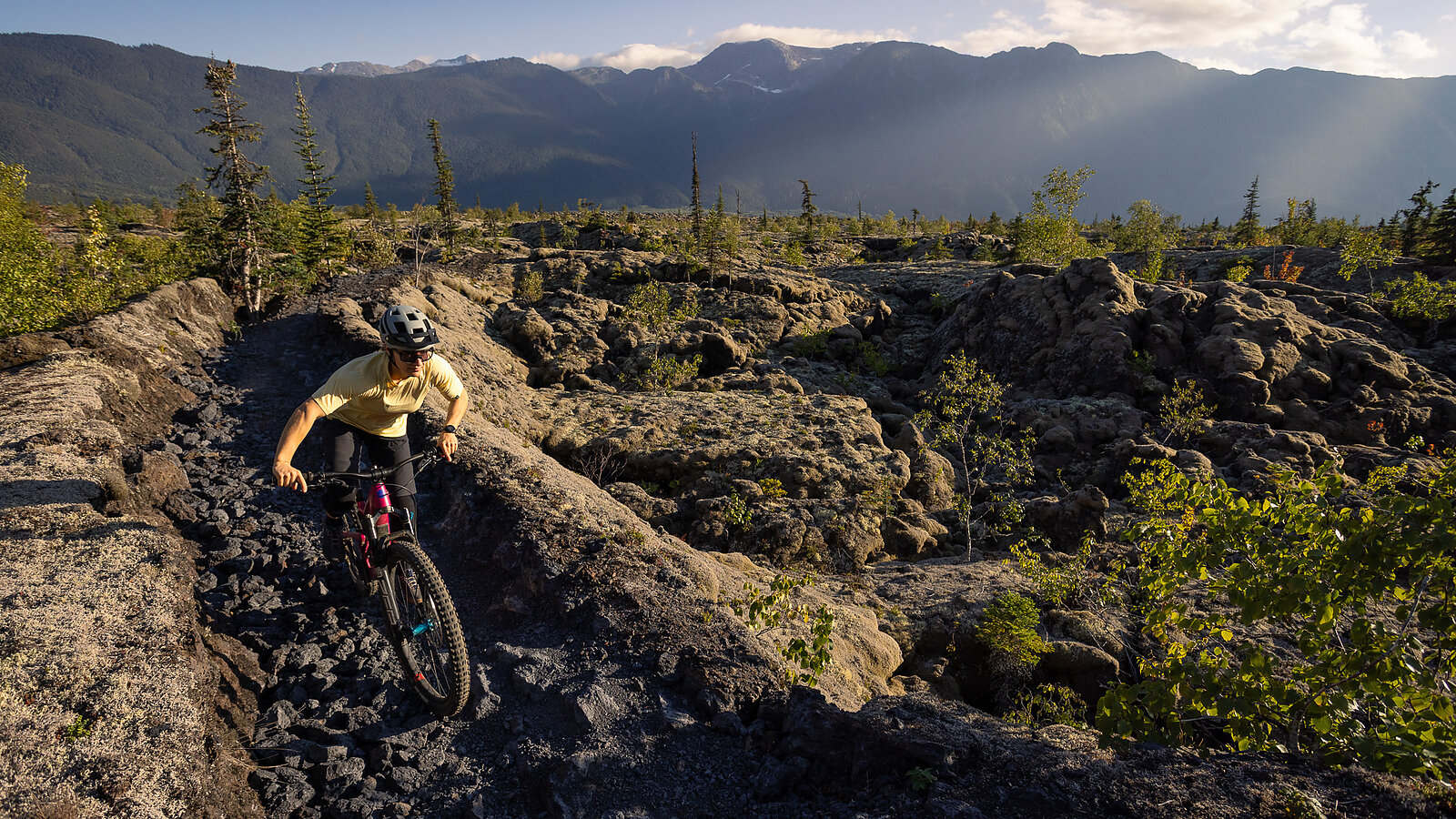
Northern British Columbia Travel Guide
Words and Photos by Ben Haggar
As vast as it is varied, northern British Columbia is an area of untapped potential.
Historically, value was placed on the seemingly endless natural resources in this immense wilderness. While resource extraction has supported northern communities for more than a century, the forests, mountains, and rivers offer a new form of currency: Outdoor recreation.
Lucky for us, no activity has been more embraced than mountain biking. It takes some effort to get here but if you’re looking for more than your standard riding experience, the rewards are infinite.
Highway 16 slices a perfect cross-section through the stacked, postcard-perfect mountain ranges synonymous with BC which makes it like the charcuterie board of road trips. From the jagged peaks of the Rocky Mountains; past rolling plains, aspen-studded hillsides and picturesque farmland of the Interior Plateau; to the Coast Mountains with forests so lush it will make you redefine the color green. It’s hard to think of anywhere that could serve up a more diverse experience for traveling mountain bikers. Amenities are well spaced (even EV friendly), but not extravagant. You’re more likely to soak in hot springs than hot tubs, camp beside untamed rivers than sleep in chain hotel beds, and find the locals more welcoming than anywhere else.
A road trip along this historic route will introduce you to nearly all the province’s landscapes, vibrant indigenous art and culture, and a hidden plethora of BC singletrack.

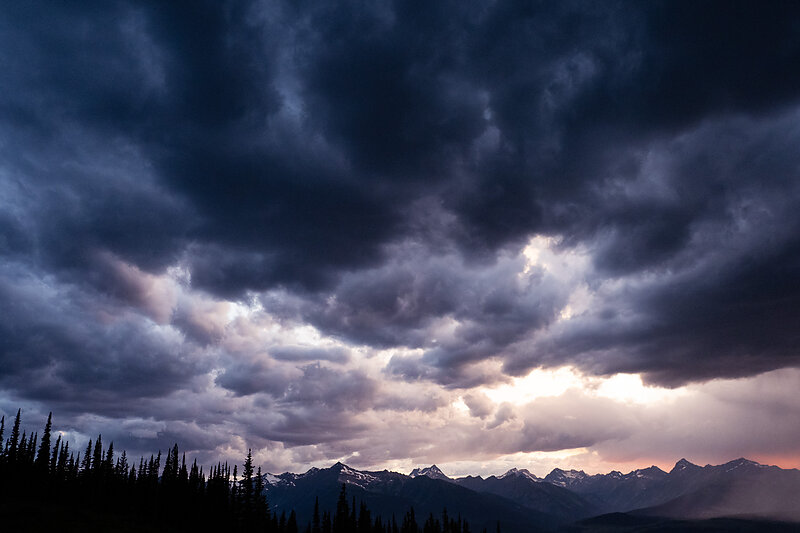
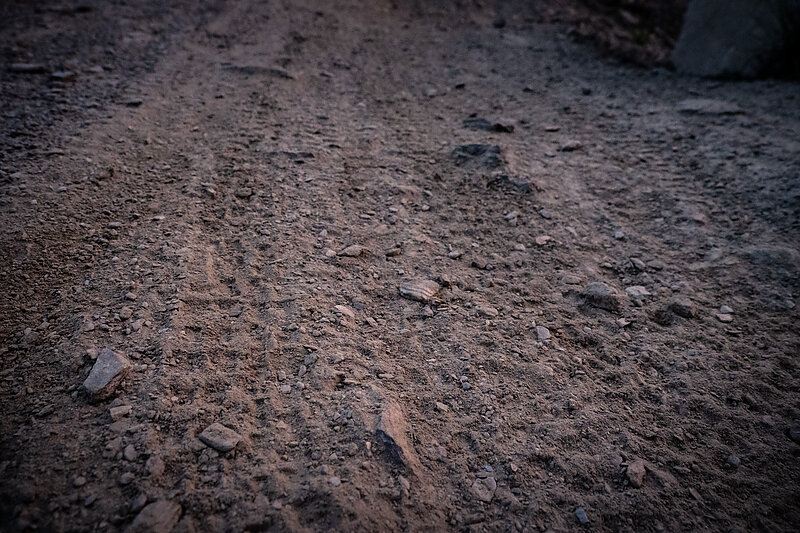
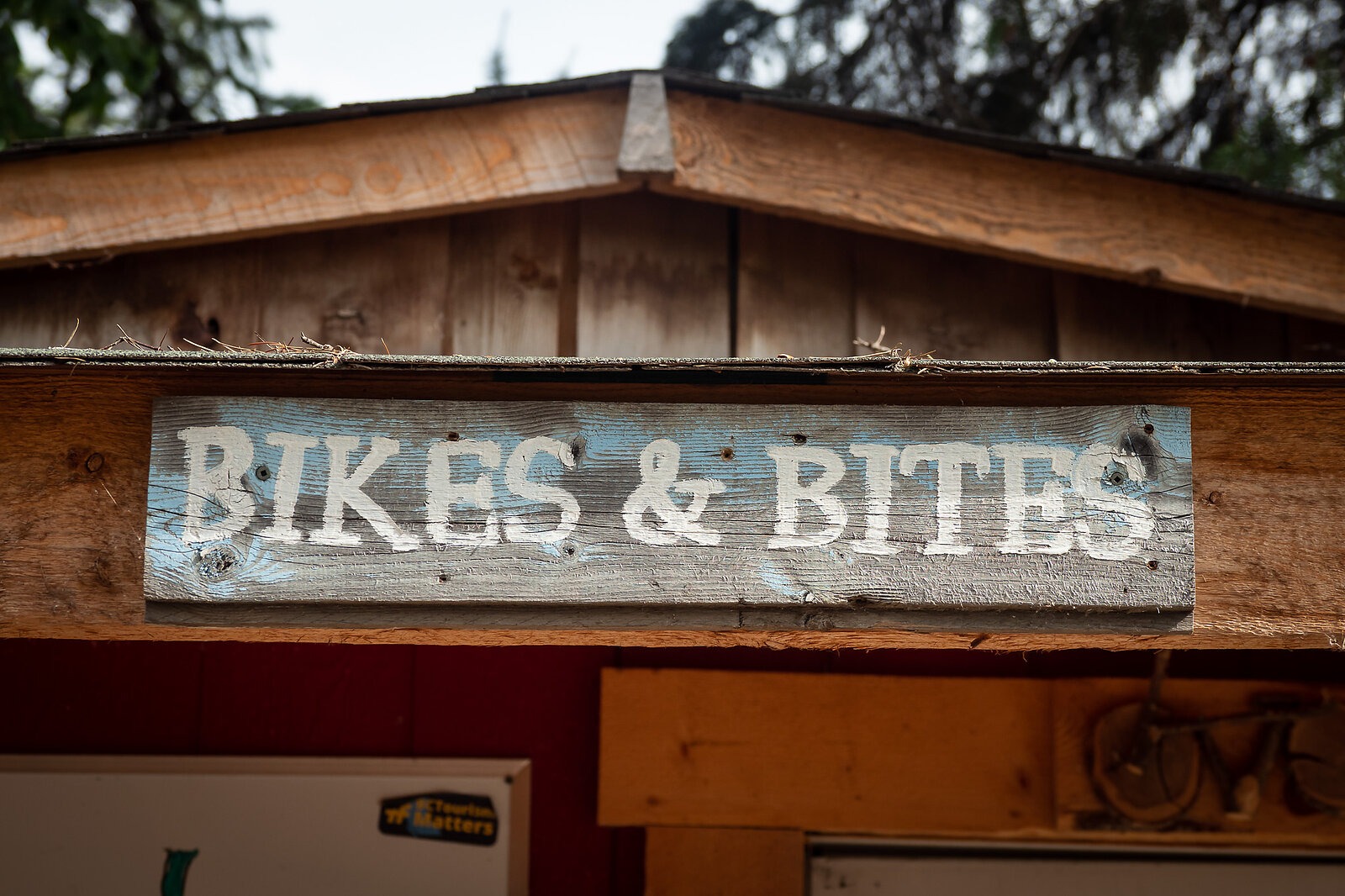
Valemount
The hamlet of Valemount quietly sits on the banks of Swift Creek with 360-degree mountain views. If you were to envision the perfect mountain scene with pocket glaciers and rugged peaks cradling a valley of pristine farmland while a wild river gently meanders to a shimmering lake, you’d have an accurate depiction of the area. This is the meeting place of the Monashee, Caribou and Rocky Mountain ranges and only 20 minutes from Mount Robson—the highest peak in the Canadian Rockies. The North Thompson Valley is home to one of the longest salmon migrations on the planet with Sockeye and Chinook travelling roughly 1,300 kilometers from the Pacific. All of these special factors have made this area significant for the Simpcw people for millennia.
The Valemount Bike Park lays claim to the best shuttle road in BC, and by virtue of a Honda Civic at the upper parking lot, they might just be right. The trail network is in stark contrast to the rugged scenery with some of the finest flow in the province. Imagine A-Line weaving through a meadow with pink flowers, no braking bumps and insane views. The park is designed around progression with consistent, predictable trail speed jumps for riders to confidently move from beginner through to advanced jumps and steep tech if desired with Moby Dick and Turducken as confidence boosting examples. It’s not all about gravity here with a continual expansion in the Swift Creek zone connecting more than 40 kilometers of cross-country style riding (and a few downhill trails for good measure) to the main bike park.
Mornings generally begin at BoShays Bistro or Vale Coffee while the evening migration centers around the bike-lined patio at Three Ranges Brewing, which is conveniently located across the street from Glacier Fire Pizzeria. Down days here require a trip across the Alberta border to Jasper and the iconic Icefields Parkway or chilling out on Kinbasket Lake.
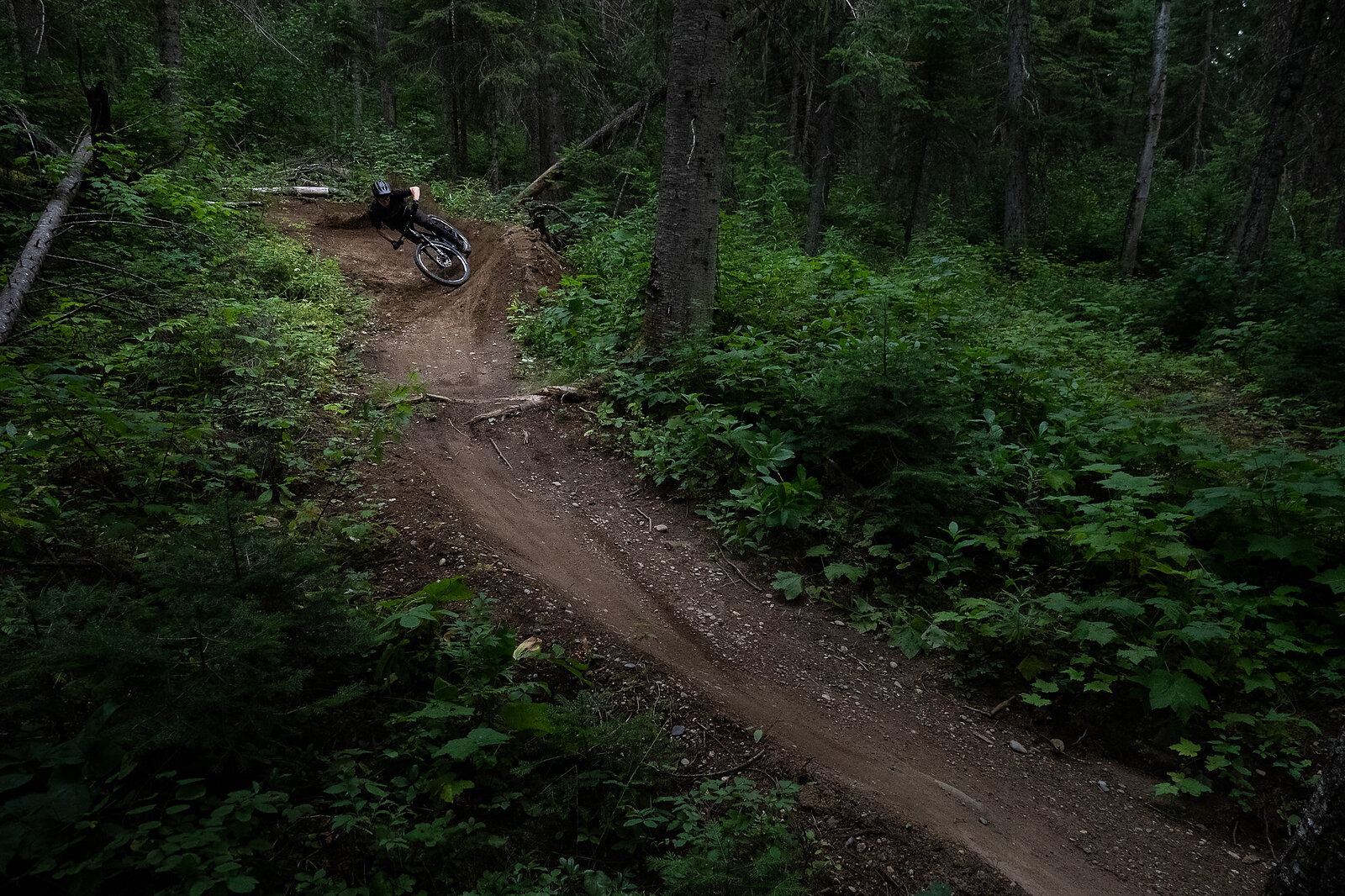
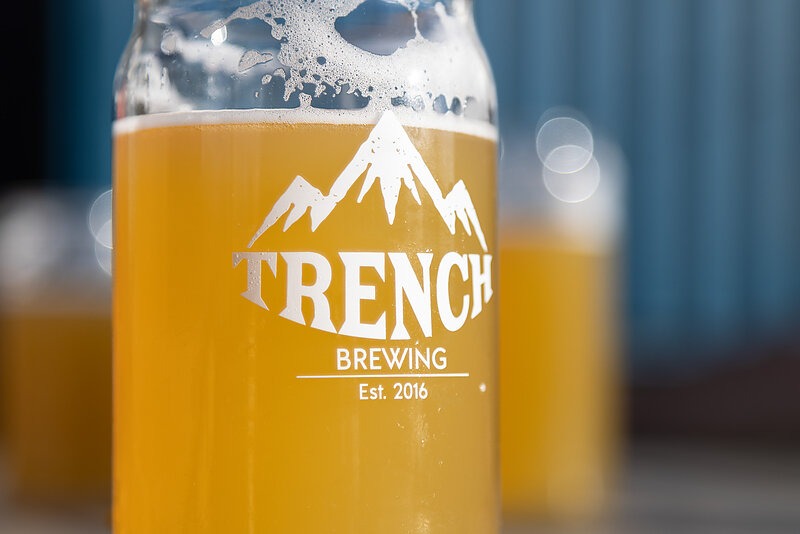
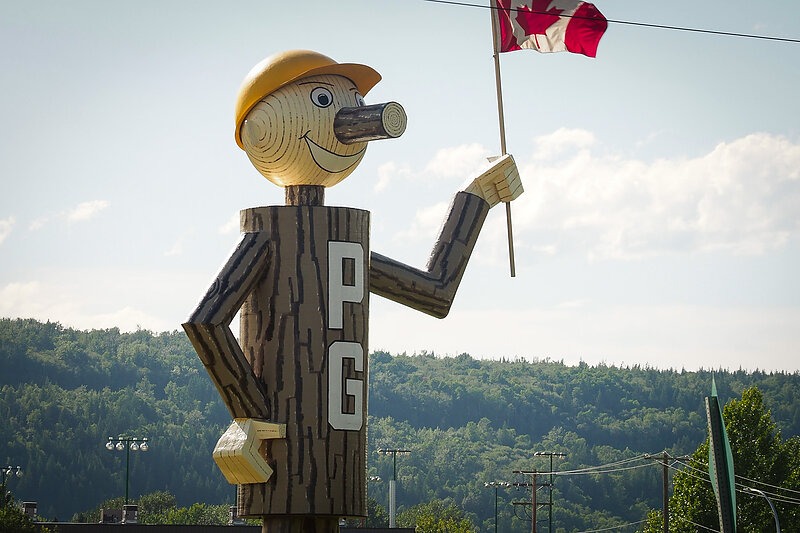
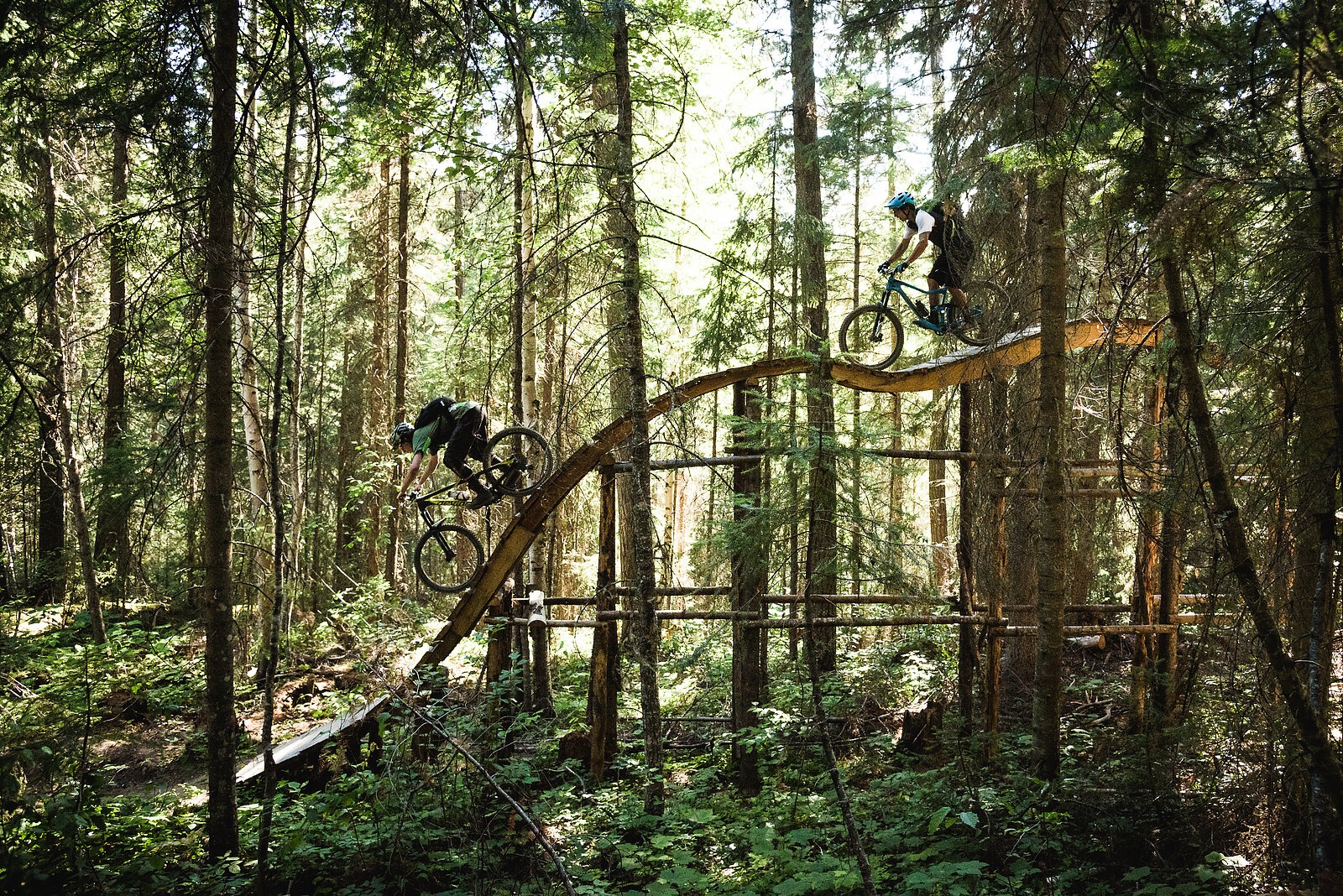
Prince George / Mackenzie
West from Valemount, Prince George (PG) sits on the arid Chilcotin Plateau where the mountains ease to foothills with large lakes and rivers dominating the spruce speckled landscape. PG will likely be your first port of call if driving from the south, sitting at the main intersection of Highway 97 and 16. Traditionally a resource and transportation hub, the Thompson River University campus has infused social amenities and a student vibe from abundant cafes to nightly live music. Being the largest population center in the north (population 68,500) means it’s a great spot to stock up on supplies, cozy up in a comfortable hotel bed, grab a nice meal, and sample some nightlife that doesn’t involve a campfire.
On the riding front, PG creates its own elevation with more reasonable length descents and climbing trails connected by engaging traverses. Boasting four main riding areas, each network hosts a full variety of trails from cross country to downhill so it’s hard to go wrong. The riding is generally low angle and fast, characterized by lots of jumps, creative woodwork and micro features for a playful vibe with sandy, well-draining soil. The largest concentration, quality, and development is centered around the Pidherny Rec Site, with classic trails like Otter Alley, Dimeslot, and New England Clam Chowder providing an eclectic mix of tech and flow.
A traditional PG après would consist of a Cariboo or two on the tailgate, but there’s no shortage of post ride joints in town with Trench and Crossroads breweries being the most popular among the riding crowd with sun drenched patios and great food. The revitalized downtown core has all the culinary delights with standouts like Nancy 0’s and Ivy Family Kitchen. For a taste of local music, check out The Black Clover pub.
Worthy of a side trip is the small community of Mackenzie two hours directly north. It’s a worthwhile destination on its own with waterfalls and beautiful wilderness, but the major two wheeled draw is the newly completed Royal Coachman trail which claims the title for “longest continual shuttle accessed alpine trail in Canada” at 14.3 kilometers. If you’ve still got energy in the legs after this epic, consider extending your ride on the Morfee Lake trail which loops back to town.
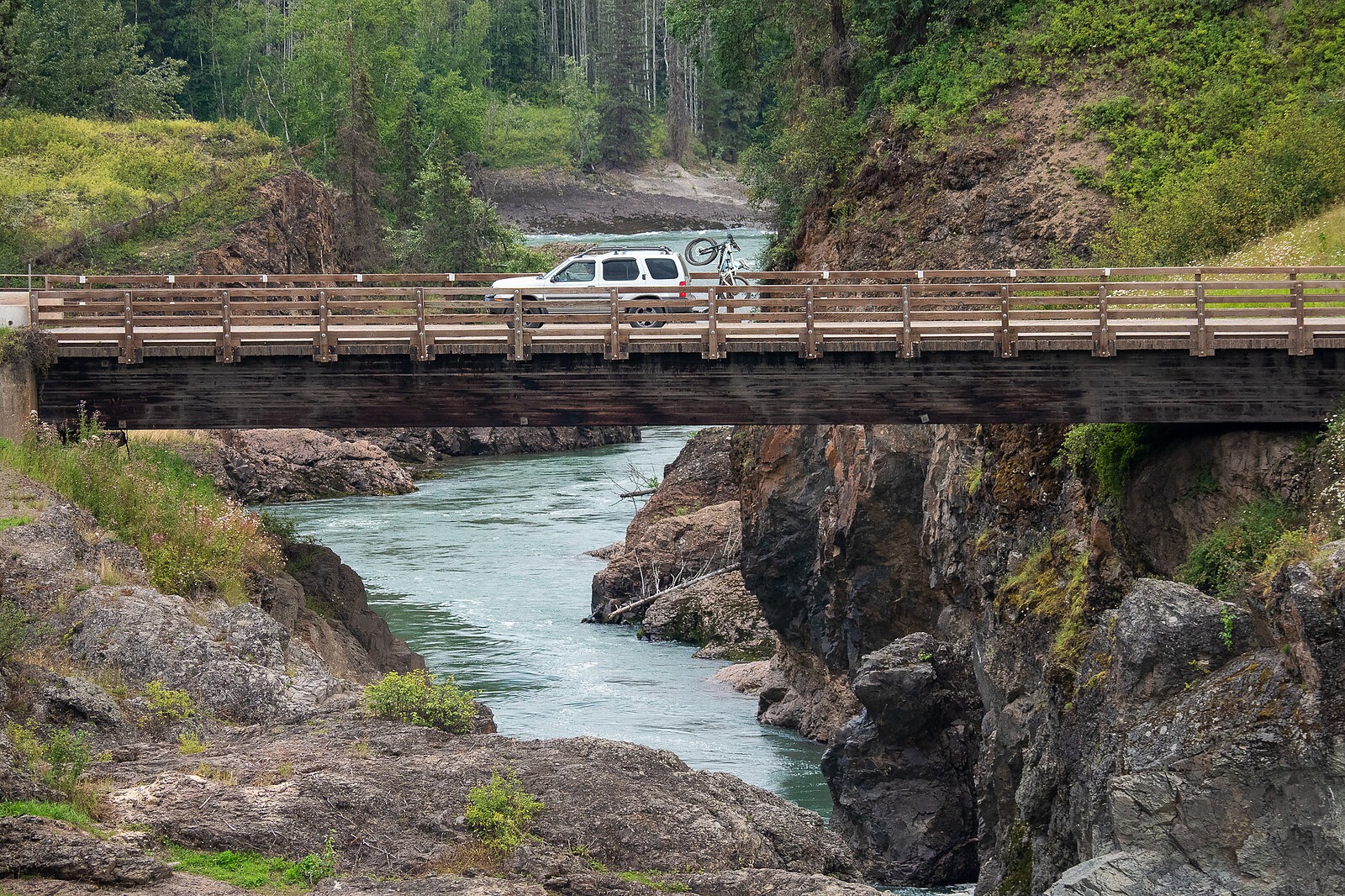

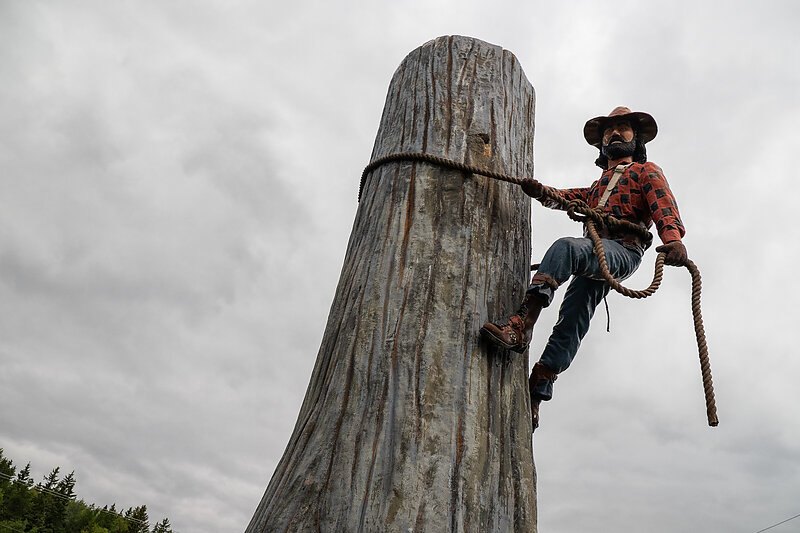

Bulkley - Nechako
It’s obvious why the Bulkley-Nechako region is called the lakes district. Rolling forested mountains dotted with cattle and horse pastures lead to large waterways where a swim is never far away after a sweaty ride. While not major destinations on their own, the cumulative efforts of communities like Houston, Fort St. James, and Vanderhoof embody the grassroots spirit of homegrown trail networks. Each town also boasts some quirky community culture to help you get to know the area on a more personal level.
Vanderhoof is the geographical center of BC and is home to 25 trails that make up the Rip’n the North Bike Park. Accessed from the heritage park directly beside the highway, the bike park is a great pit stop to stretch the legs and break up the drive on an extended lunch break. The short trails are built for quick laps and creative link ups for all skill levels.
Fort St. James is a bit off the main route, but visiting the national historic site is a highlight for history buffs. The restored buildings of the Hudson’s Bay fur trading post on the shores of Stuart Lake are worth a visit. The riding is centered on the flanks of Mount Pope Provincial Park which holds a decent selection of intermediate and advanced trails characterized by punchy climbs and technical descents. The highlight is the 6-kilometer descent from Mount Pope with fantastic views from the summit. Riding early or late is recommended or risk missing the “world-class chicken races” that happen daily at 11:30 sharp.
You’ll know you’re in Houston due to the world’s largest fly-fishing rod beside the railway park. The town is little more than a gas station and diner, but the area is renowned for both lake and river fishing. For non-aquatic fun, the fast and flowy trail network on Mount Harry Davis is expanding yearly. This family-friendly area is accessible by shuttle or the extensive green trails are multi-directional so climbing is always an option.
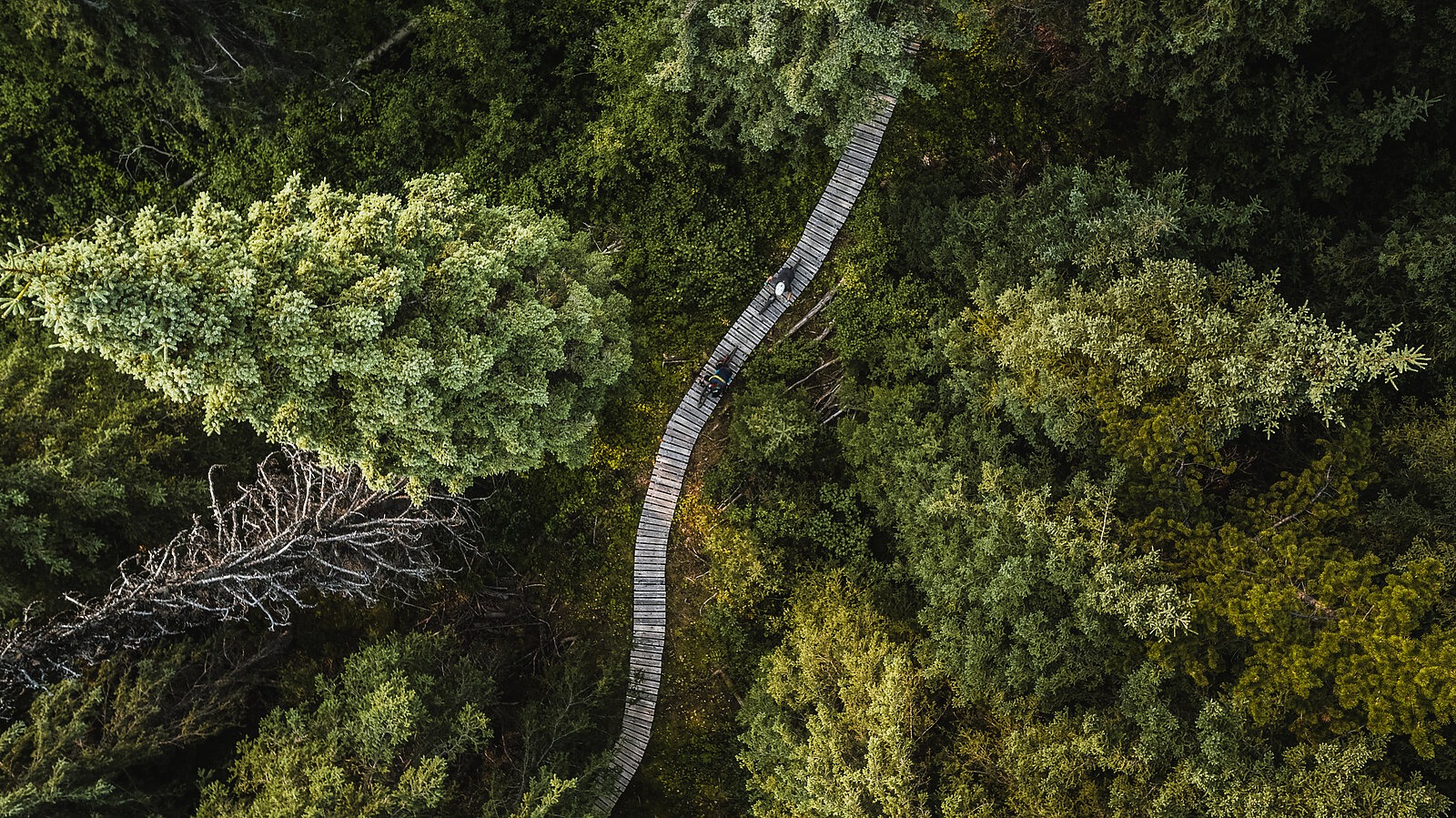

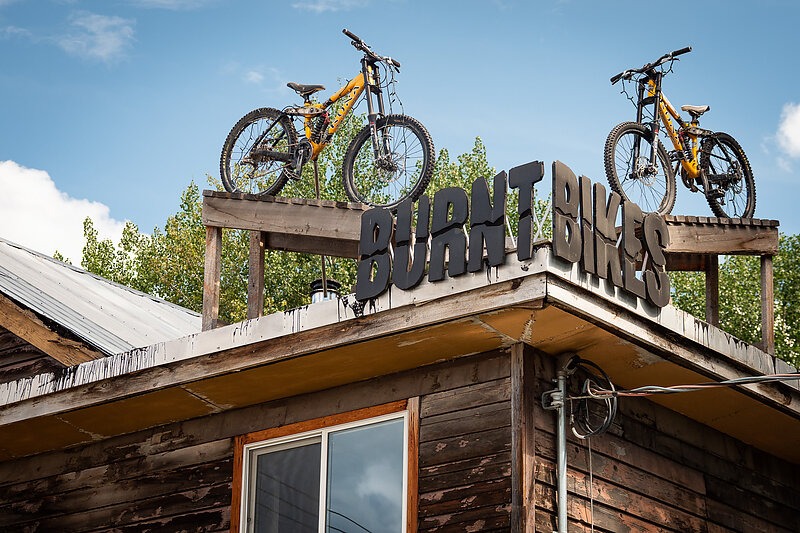
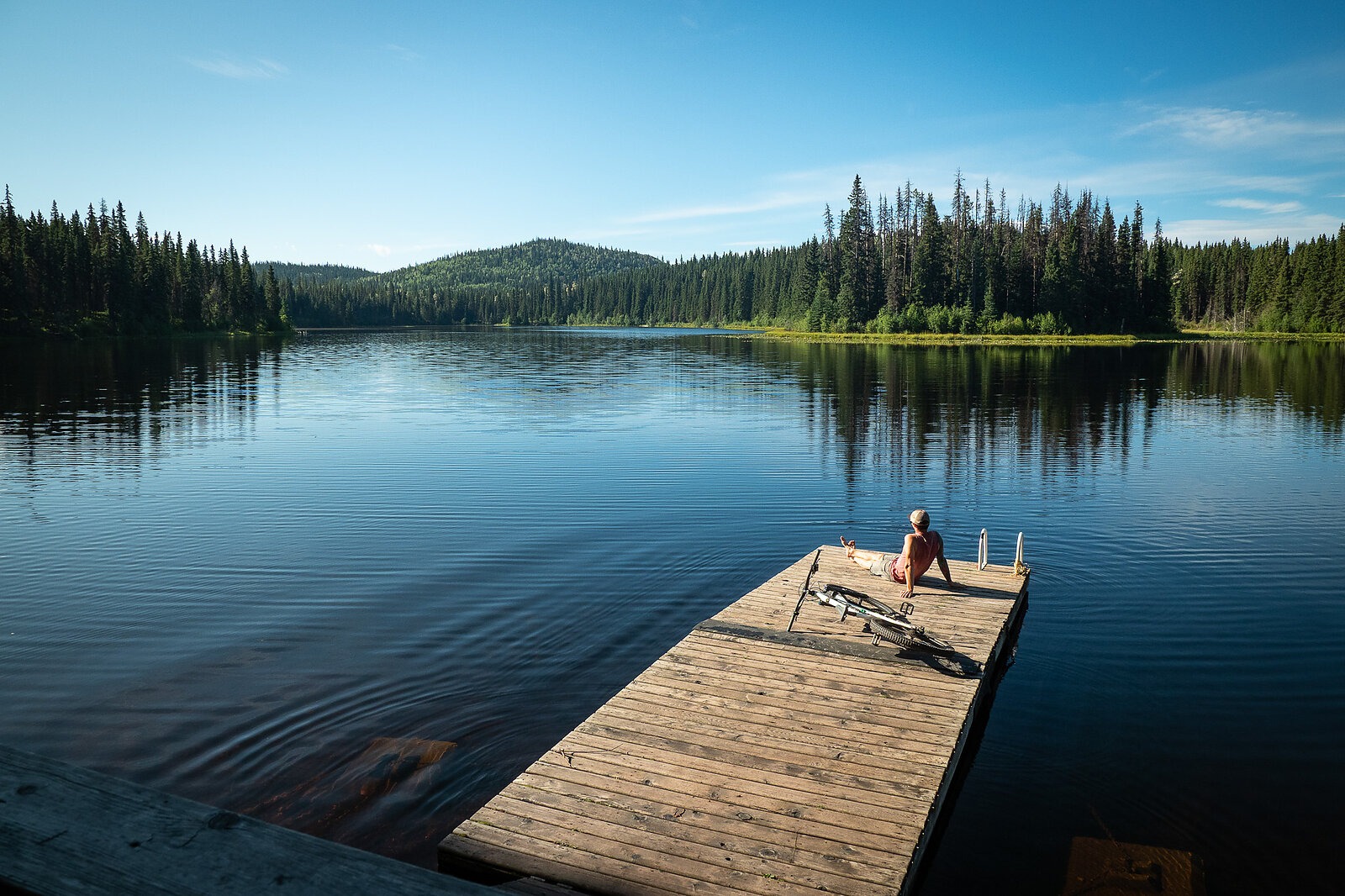
Burns Lake
If there’s one community in the north that has dove head first into mountain biking, it has to be Burns Lake. Known for its IMBA ride center designation, the small town has created a vast network of high quality trails in a short period of time through a dedicated team of locals and the most unlikely catalyst—an explosion at the local timber mill. The silver lining was a community recovery grant and the opportunity to shift the town’s focus from resource to recreation. The result is the expansive network at Boer Mountain with more than 100 kilometers of trails of every flavor.
The locals have playfully embraced Boer Mountain’s namesake with a slight tweak—creating a hog-centric trail naming theme throughout. A buff shuttle road carves switchbacks through the center of the network so there’s tons of options for length and difficulty of ride if you don’t have time for another full mountain lap. Signature machine-built flow trails like When Pigs Fly and Swoopy Hollow snake their way through lush aspen forests while the more technical cross-country-centric Razorback, Pigasus, and Star Lake trails circle the outside of the network through more coniferous forest and can be combined for a true full day epic. Cross country is a relative term here as Razorback still has nearly 650 meters of descending. The network can also be accessed via the very enjoyable Huff ’n’ Puff climb trail which features local indigenous artwork.
What makes Burns Lake truly special is the community aspect that shines through weekly events. Wednesday nights are for giving back by grabbing a shovel, jumping in the Burnt Bikes van for a few hours of trail maintenance followed by a shuttle lap and refreshments at the lake where you get to experience the stoke through the eyes of the locals. The other community building highlight is meeting fellow riders at the free campground conveniently situated at the base of the trails beside Kager Lake which is about 99-percent mountain bikers on any given summer evening. Dining and accommodation options are limited so cooking over the campfire is the preferred nightlife. There’s a Ride Burns donation box at the cook shelter with all proceeds going back to the trails which is a great way to show support. If you’re looking for a rest day activity, Lakes District Air offers affordable flight seeing or will drop you at a remote lake brimming with trout for your fishing pleasure.
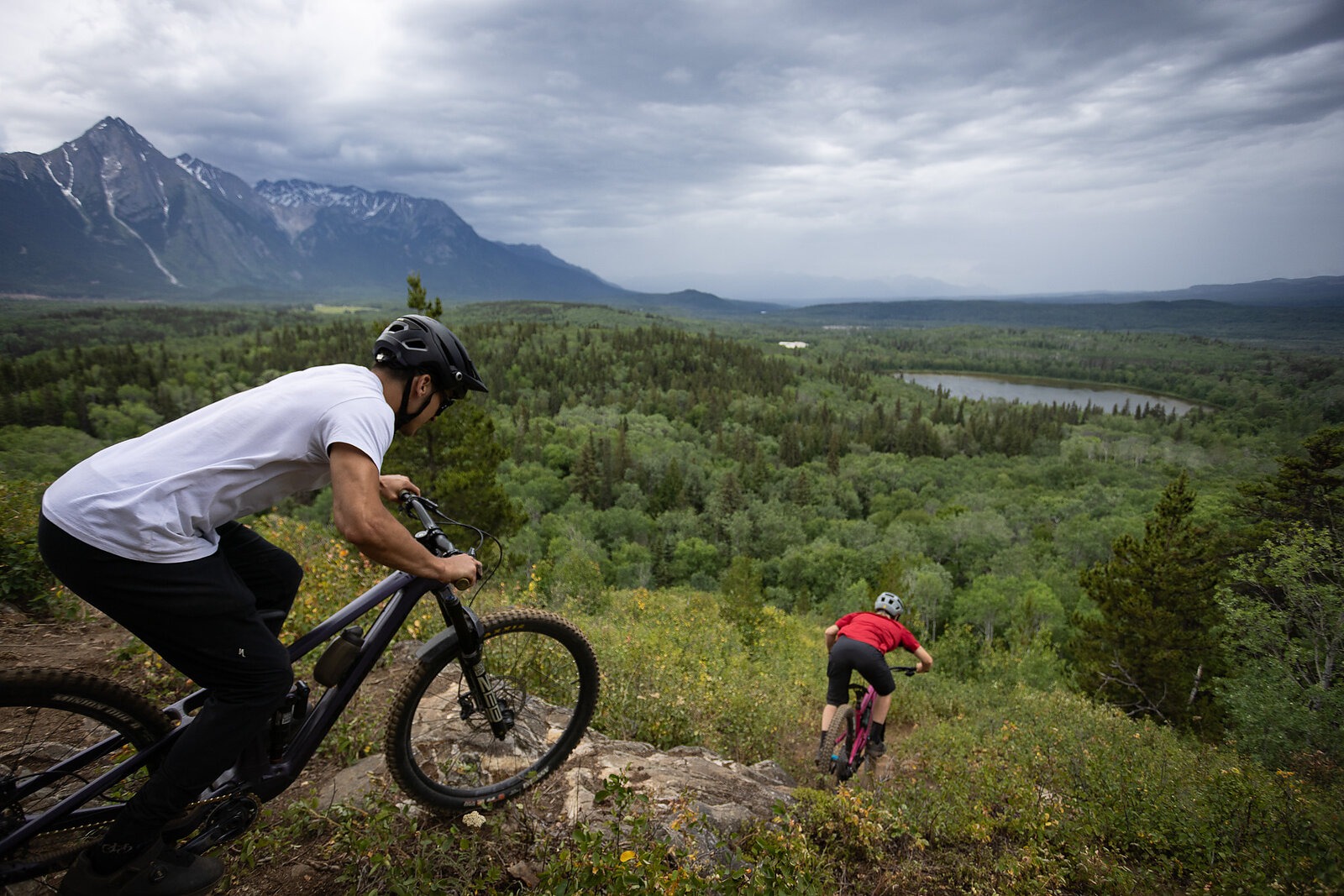
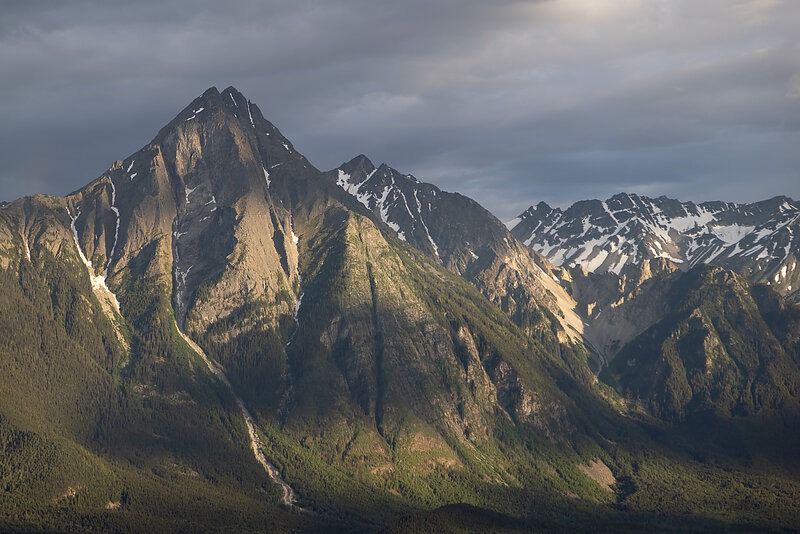

Hazelton
Founded in 1866, Hazelton was a major hub of the Northwest as prospectors disembarked paddle-wheelers from Prince Rupert during the Yukon and Cariboo gold rush eras. The foaming rapids and shallow gravel banks of the mighty Skeena River make it hard to imagine steam ships plying these treacherous waters, but a replica of the S.S. Hazelton sits moored just off the sleepy main street as proof of a long-gone era. Some of the gold rush trails are still used today to traverse the rugged Rocher Déboulé Range but the Glen Mountain trails are distinctly more modern for knobby tires.
The definition of an unpretentious grassroots trail system, don’t be surprised to see a few locals riding in gum boots, jeans, or Birkenstocks, usually with a helmet but always with an ear to ear grin. The popularity of mountain biking has skyrocketed by bringing local youth into the fold with trailbuilding classes as part of the curriculum and free bikes to use—spearheaded in part by Wyatt Verga—one of the founders of Vermont’s famous Kingdom Trails. The modest network can be ridden in a day and the mellow Up N At’em climb makes multiple laps a breeze. Supportive corners and technical, benchy terrain holds the dry, rocky soil in check. The highlight here has to be taking in the best viewpoint of any trail network in the north.
The townsite at the crossroads of the Skeena and Bulkley Rivers has been an important meeting place long before colonial times. Culture and trade flourished between indigenous cultures and the Gitxsan historical site of ‘Ksan Village is a living testament with long houses, intricate totem poles, a museum, and the Eagle House Cafe serving up traditional Gitxsan fare. The ‘Ksan campground on the banks of the Skeena River with commanding views of the pyramidal Stegyoden peak is the best spot to chill out with a cold one after a ride. If you line up your visit on a Sunday, the local farmer’s market is not to be missed.

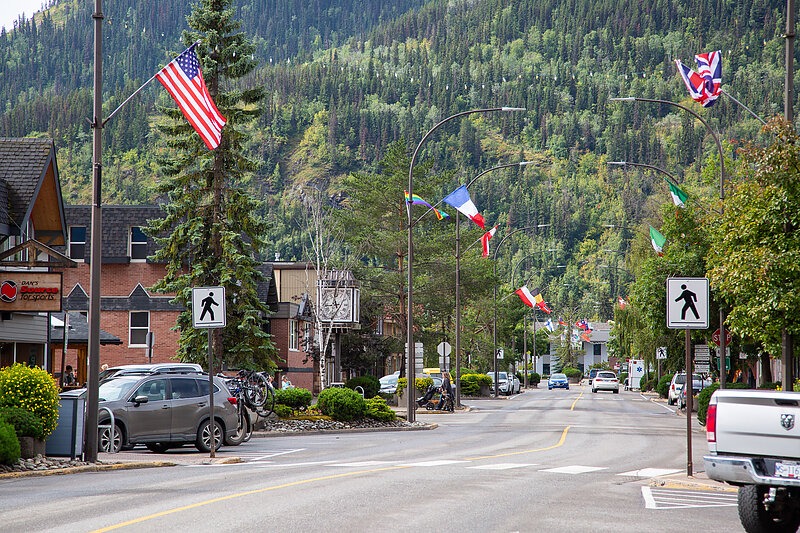
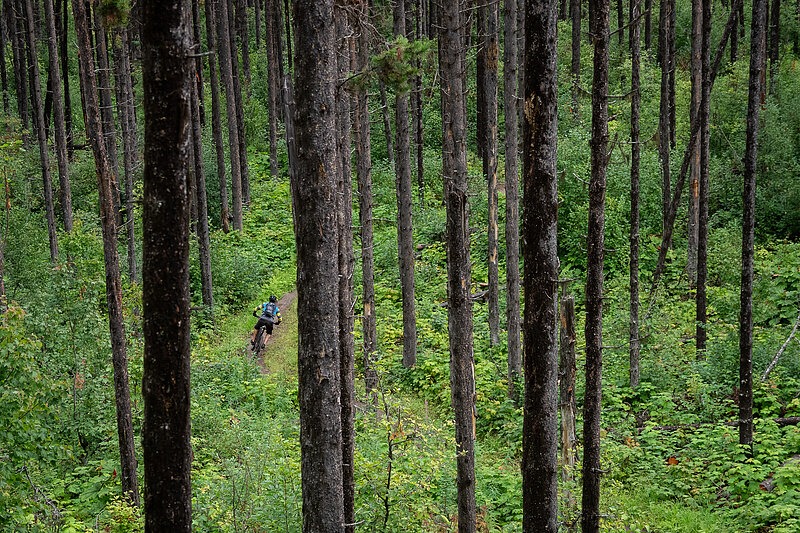
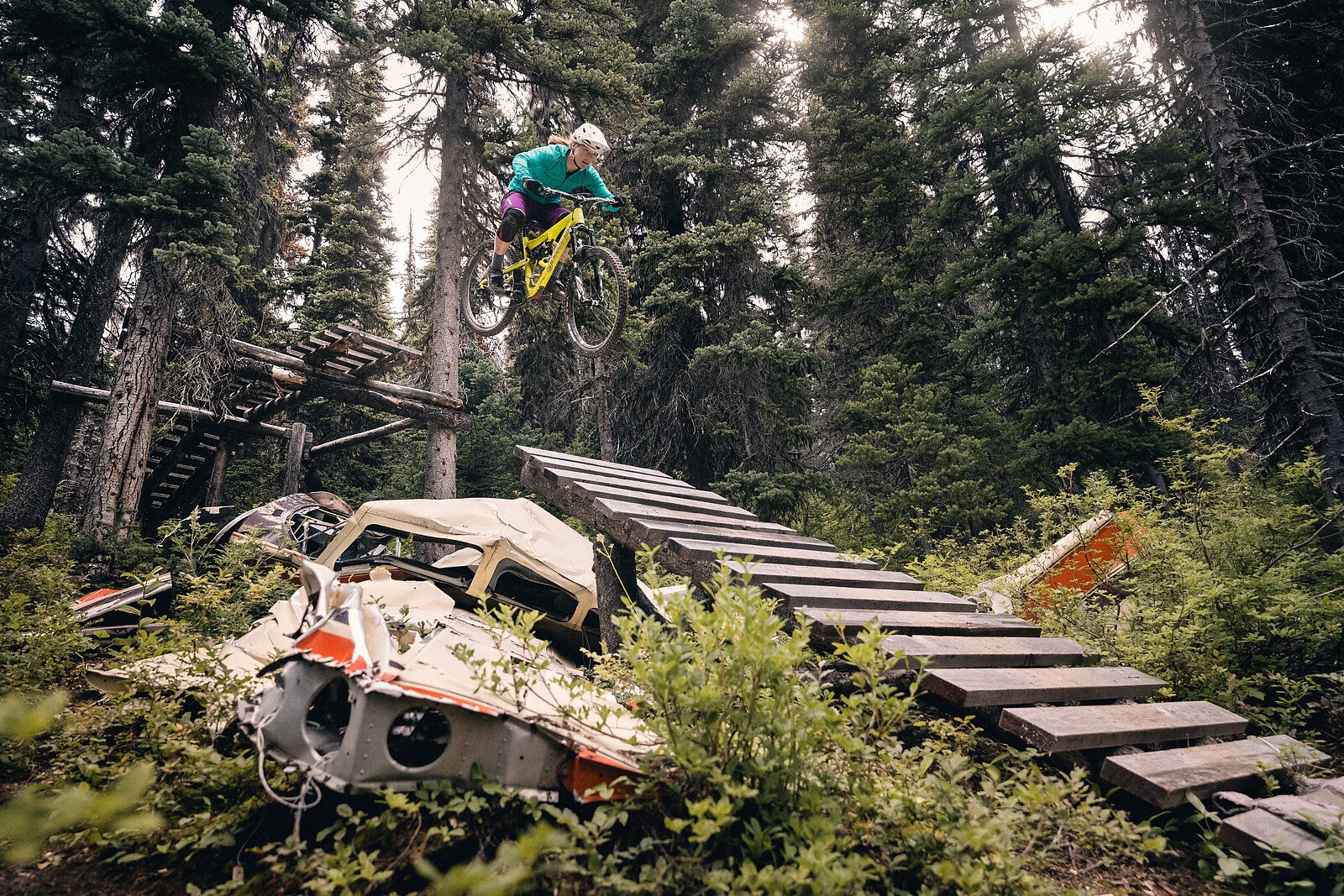
Smithers
Smithers takes the title for “prettiest town in the north.” The Bavaria-inspired ski town would be right at home in the Alps. While most northern towns were designed around industry, Smithers has avoided this fate and the downtown core emits a refined beauty where everyone takes pride in what they do from storefronts to the burgeoning culinary scene. This prideful attitude extends to the trails as well.
The Bluff is the closest riding area to town and holds the highest concentration of trails. Development here began in the late ‘90s when the crew of local riders would take an annual trip south to Whistler and the North Shore, take inspiration from the trails, and build their own (but one notch higher on the rowdy scale). You’ll find technical challenges and big stunts alongside cruisy flow throughout the Bluff. The Ptarmigan Rec Area is shuttle friendly with well-built jump trails and Piper Down has a gap jump over a crashed Cessna. Recently, a lot of effort has been put into improving and expanding the alpine offerings. The classic Cronin Pass trail has a new and improved climb and phase one of the Hudson’s Bay Mountain circumnavigation trail, Round the Mountain, was completed in 2024 with phase two construction slated for 2025. There’s also progress toward the long-anticipated lift access biking at the resort so stay tuned.
The food and brewery scene here will delight as much as the riding. Bugwood Coffee and Two Sisters are morning and afternoon standouts while Roadhouse takes top spot for evening meals. Smithers Brewing is the top après spot with modern and unique brews like its Son of a Birch pilsner brewed entirely with birch sap and no water. For something completely different, Rustica Bakery (its staff delivers all of its baked goods to local restaurants and cafes by bike) has Cycle Cafe Saturdays where a ride out to its rural bakery offers Instagram worthy pastries, farm to table lunch, and evening pizzas (lunch and pizza must be pre-ordered by Thursday). There’s also a new dedicated paved cycle path to Telkwa which has a great ice-cream shop by the river.
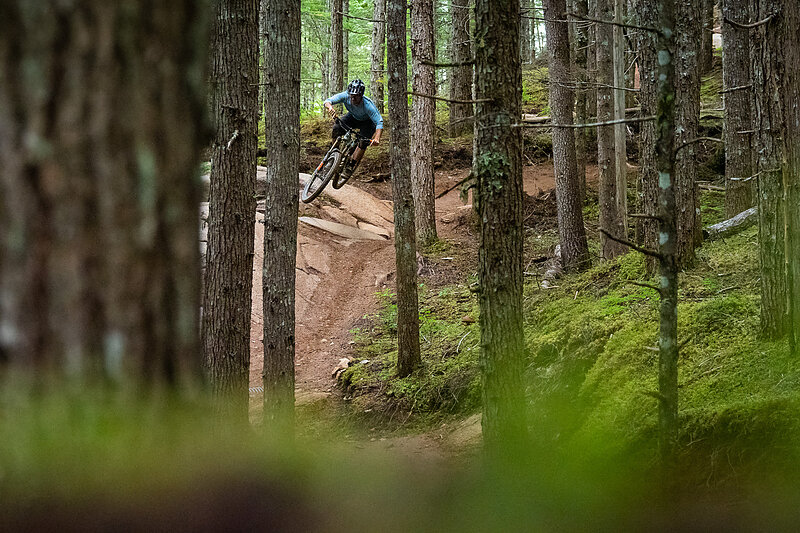
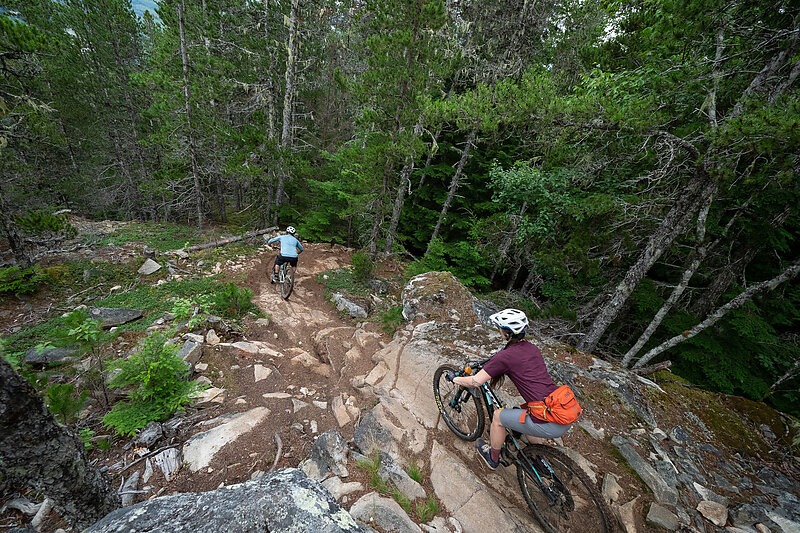



Terrace
Nearly every vehicle in Terrace has a mountain bike slung over its tailgate these days. The ridership per capita in this blue-collar community is unlike anywhere else in the north. Trail development has exploded in recent years due to a younger demographic moving to town for the already stellar four-season recreation opportunities and nearly year-round riding. The Steelhead fishing is truly world-class and holds the record for the largest Steelhead caught at just shy of 100 pounds. Terrace is also an arts hub with galleries, numerous gigantic murals beautifying the downtown core, and the Freda Diesing School of Northwest Coast Art campus.
The riding here is distinctly coastal with smooth granite slabs and Play-Dough-esque auburn dirt shaped to perfection through lush PNW rainforest. “Terrace flow” is a local descriptive of the stubborn geography and featured terrain which makes trailbuilding difficult but creates varied and engaging riding. There will usually be a climb or cruxy section for humility, and a few technical sections are all but guaranteed on each trail. The trailbuilders here are an intuitive and hard-working bunch who use these natural features for an unforgettable riding experience.
Copper Mountain holds Terrace’s original trails and provides the only shuttle access for steep fall-line adrenaline root webs and North Shore-style features. Terrace Mountain which abuts the east side of town has seen the most recent work with modernization of Hatchet Boy and Downtube and new trails around the Spring Creek trailhead. The climbs are punchy but the intricate rock work, technical roots, grippy slabs, and buttery smooth jumps are worth every drop of sweat. Trails off Billey Goat bump add shorter laps with jump and slab trails of progressive difficulty, while the immensely popular Lichen Loop and Shangri-La masterpieces are not to be missed. All Spring Creek trails connect back to the new Bear Back flow trail which is a great way to finish up.
As with everywhere in the north, camping is always an option, but Hidden Acres Guesthouse offers cute cabins and treehouses on picturesque farmland. The guesthouses are conveniently located near Chef Abi’s Indian Cuisine (the sizzlers are an experience) and if you’re staying in town, Blue Fin Sushi takes advantage of the abundant fresh local seafood. The Fix bike shop cafe is a convenient (and delicious) breakfast spot, especially if you need any supplies for your bike.

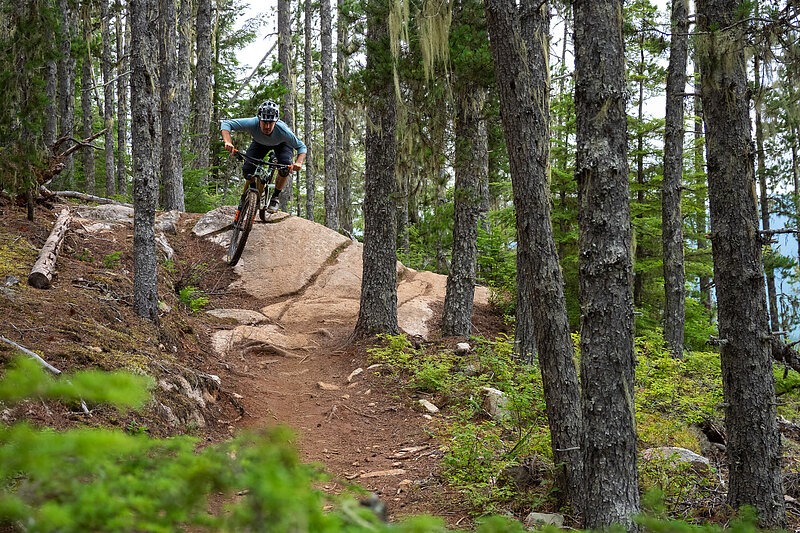
With its central location, Terrace is a great place to base yourself for satellite trips with five additional riding destinations within a two-hour drive. The riding further afield is worth a few days of exploring. The Nisga’a village of Gitwinksihlkw has a fun network of intermediate flow trails and a 270-degree viewpoint over the spectacular Nisga’a Memorial Lava Beds at the top of Saasak Hill. The real gem here is the new lava bed trail (visible from the viewpoint) which is like riding chunky slick rock through a lunar landscape. At sunset, it’s an otherworldly experience. Maroon Mountain, 20 minutes north of Rosswood, provides a full day of alpine riding. Expect to push your bike some of the first 7 kilometers before bursting onto pristine high-alpine singletrack and expansive views over the coast range. With plans to reactivate the upper logging road, bypassing most of the current climb, Maroon is slated to be one of the most accessible alpine trails in the province. 45 minutes south, Kitimat has a new multi-million-dollar pumptrack and jump park for something a bit more urban so there’s no shortage of options close by.
From Terrace, there are three ways to finish your road trip. North to Alaska, retrace Highway 16 back to Prince George (and maybe hit some of the ride destinations you missed on the first pass) or close the loop by driving west and taking the Inside Passage ferry from Prince Rupert to Vancouver Island. The overnight journey traverses the pristine Great Bear Rainforest which is a hotspot for humpback whales, orcas, grizzly, and spirit bears and is the perfect end to one of BC’s most epic road trips. The only issue is that you’ll need another week off work getting sidetracked by the plethora of riding on the Vancouver Island.
Each trail network in northern BC is built, maintained, and advocated for by local volunteers. Communities here work together to share resources, knowledge, and muscle power to keep these trails alive and robust for local, traveling, and future riders. A little goes a long way up here so please consider donating to these invaluable and cherished grassroots networks when visiting to help keep the stoke alive.
